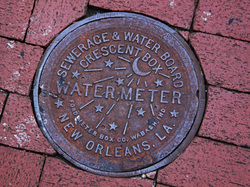
The odors arise from anaerobic conditions where sulfate reducing bacteria (SRB) become a substantial portion of the biomass. These organisms produce the H2S. Other microbes in the same anaerobic conditions also produce the equally odorous organic acids and mercaptans. The key is sewer lines have anaerobic environments with excess BOD (microbial food) and the only available electron acceptor is sulfate (SO4) or other organic compounds.
I will cover the currently used control methods and then propose an option that can reduce chemical demand and odor complaints. Typical odor control approaches rely on the following
- Ferric Chloride & H2S binding agents
- Hypochlorite & Hydrogen peroxide
- Sodium hydroxide - makes H2S more soluble in water & lowers volatile organic acids
- Nitrate Solutions
- Perfumes
- Biocides
- Enzymes & Microbial additives

 RSS Feed
RSS Feed